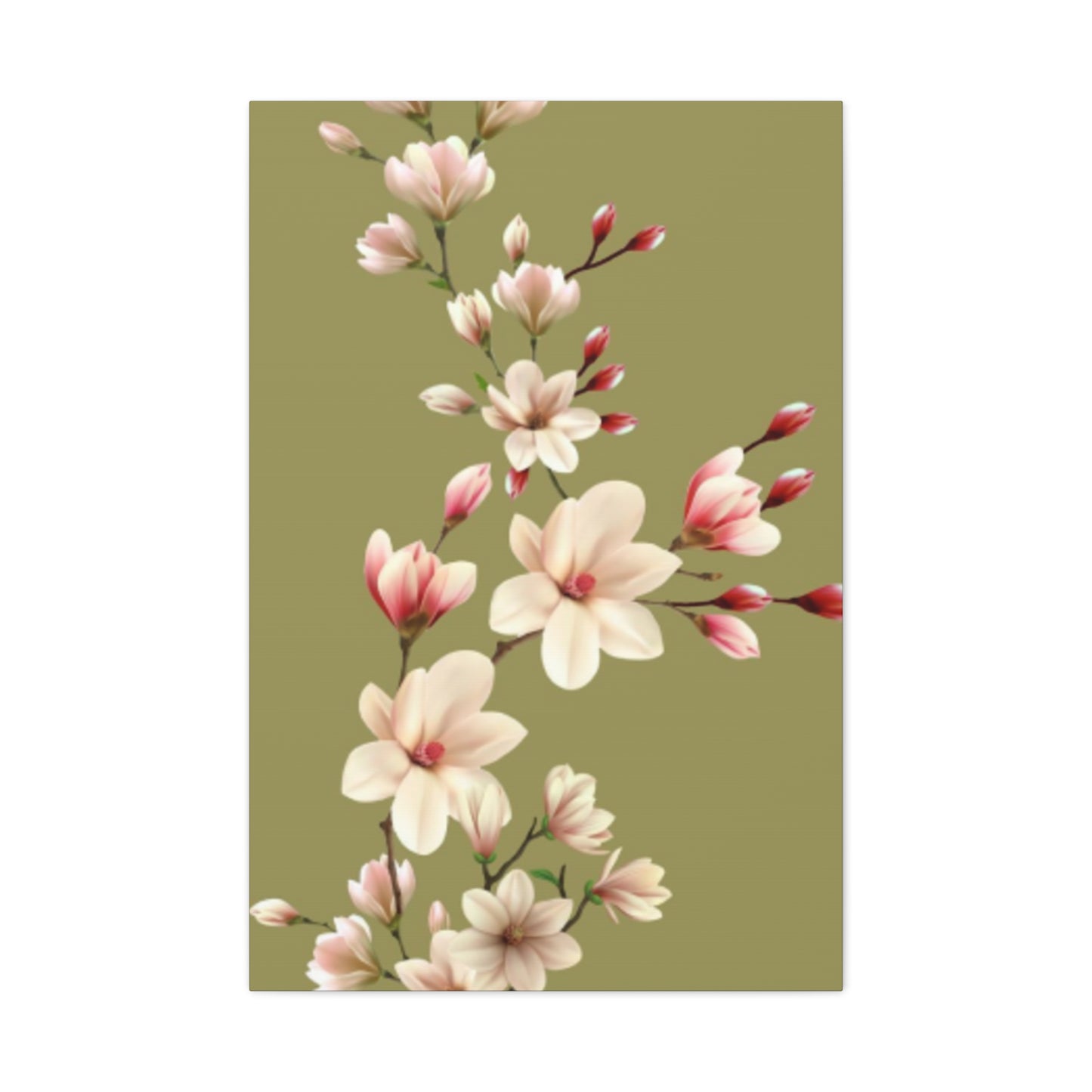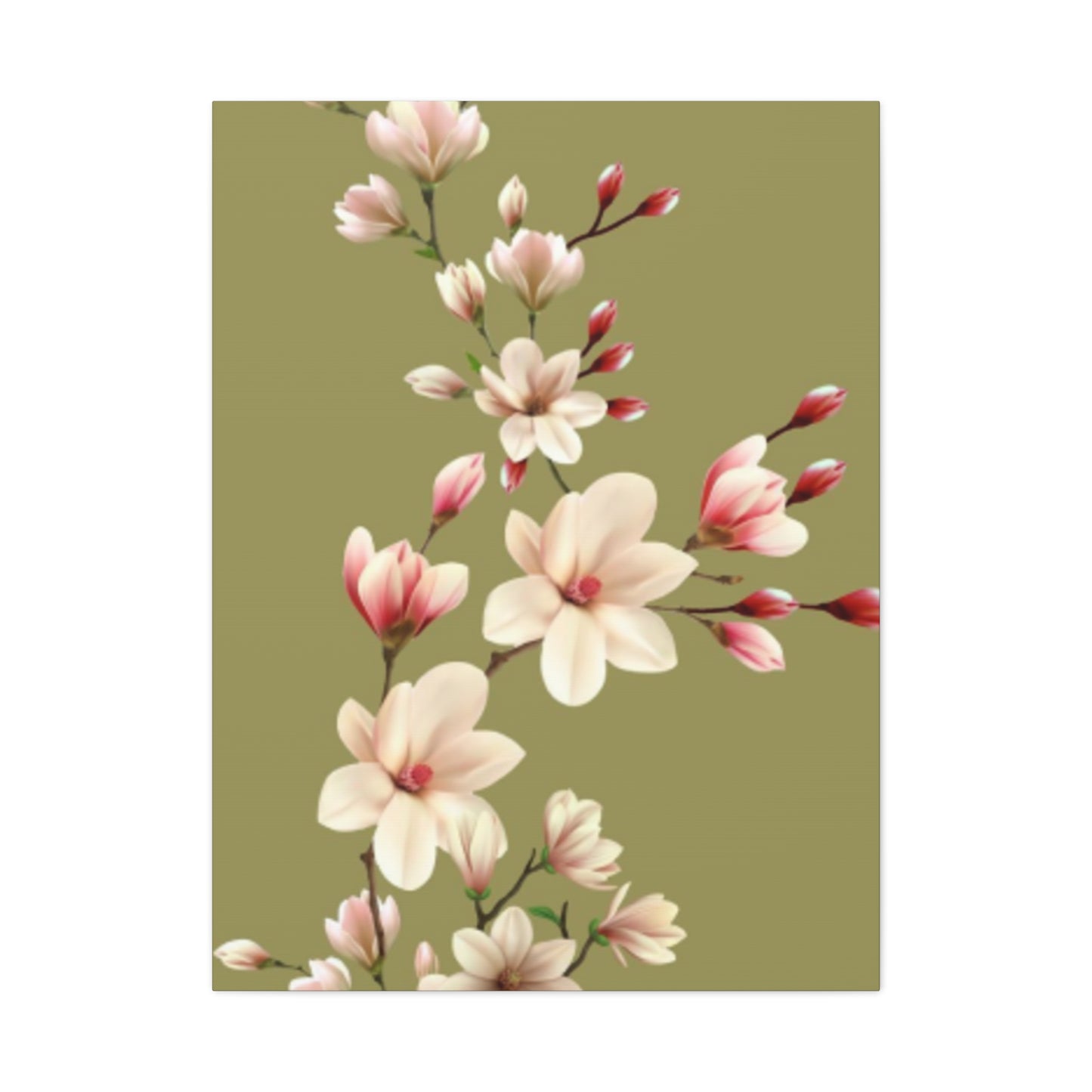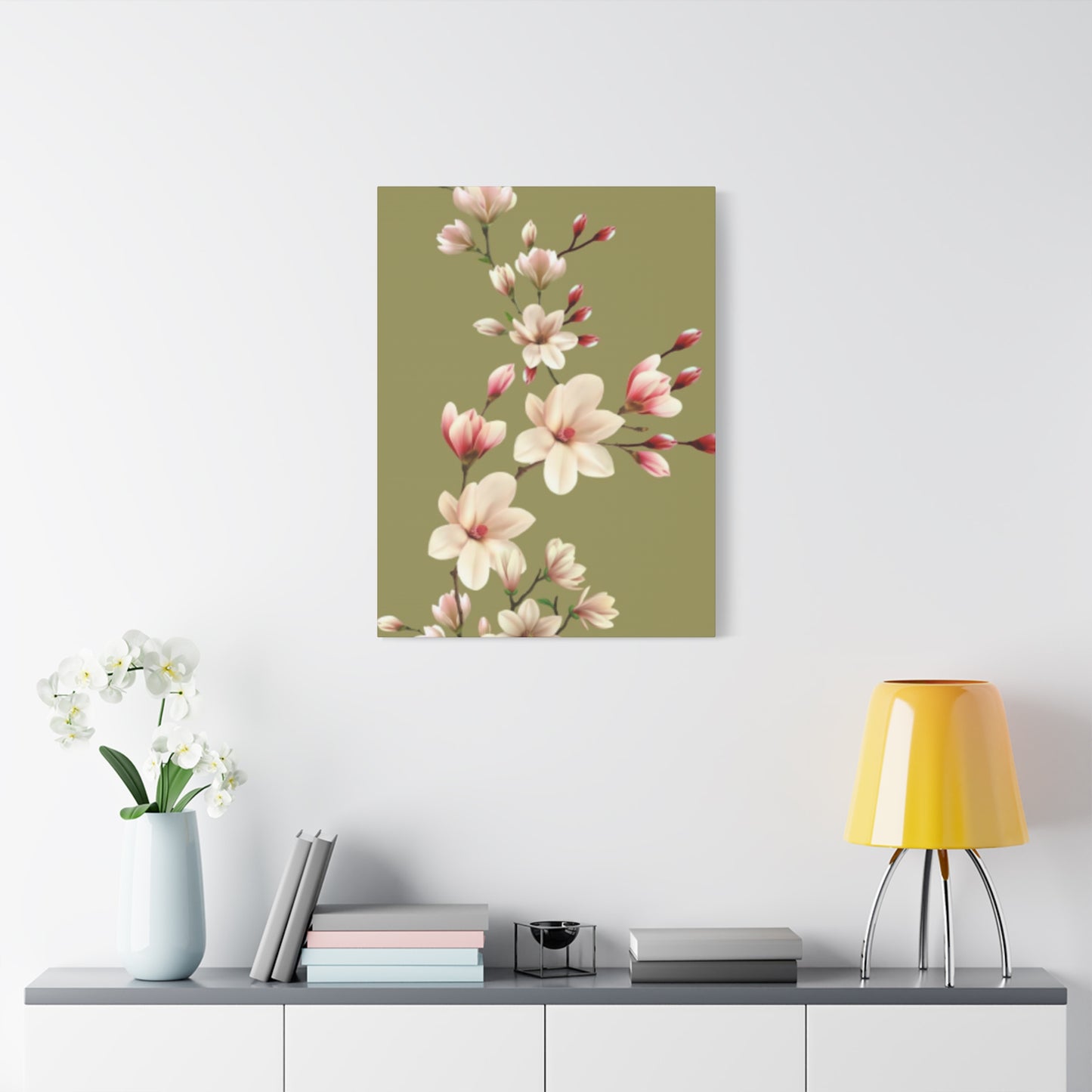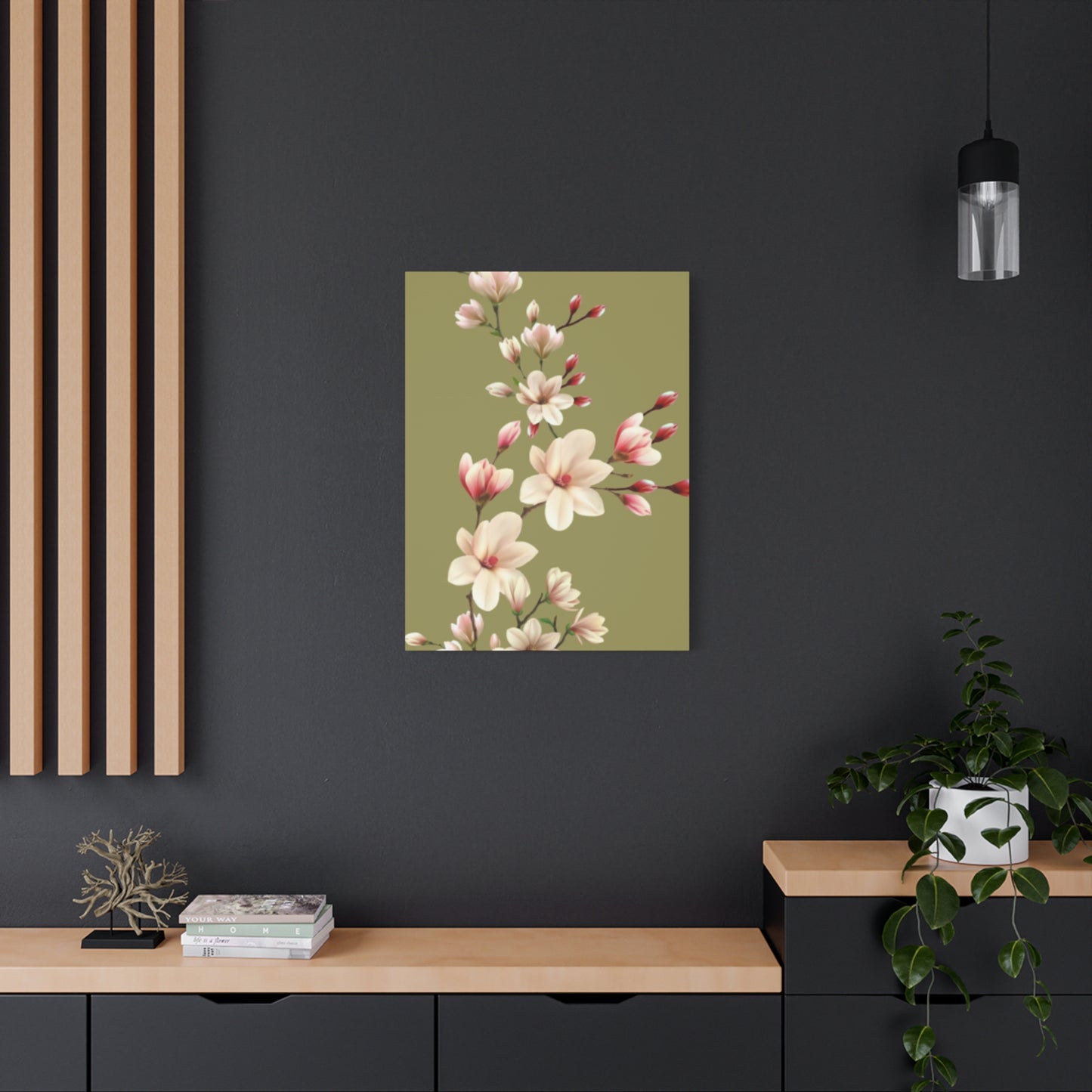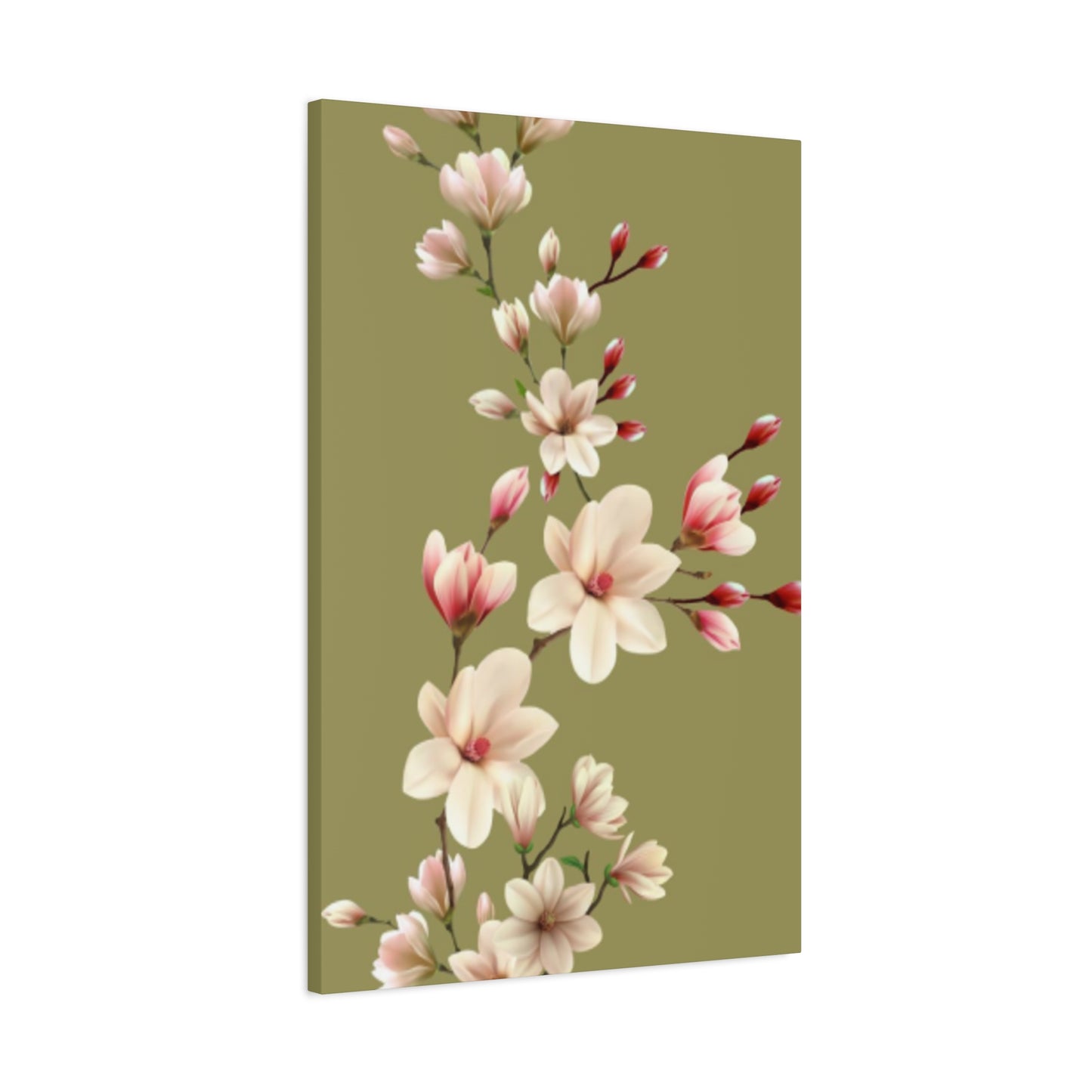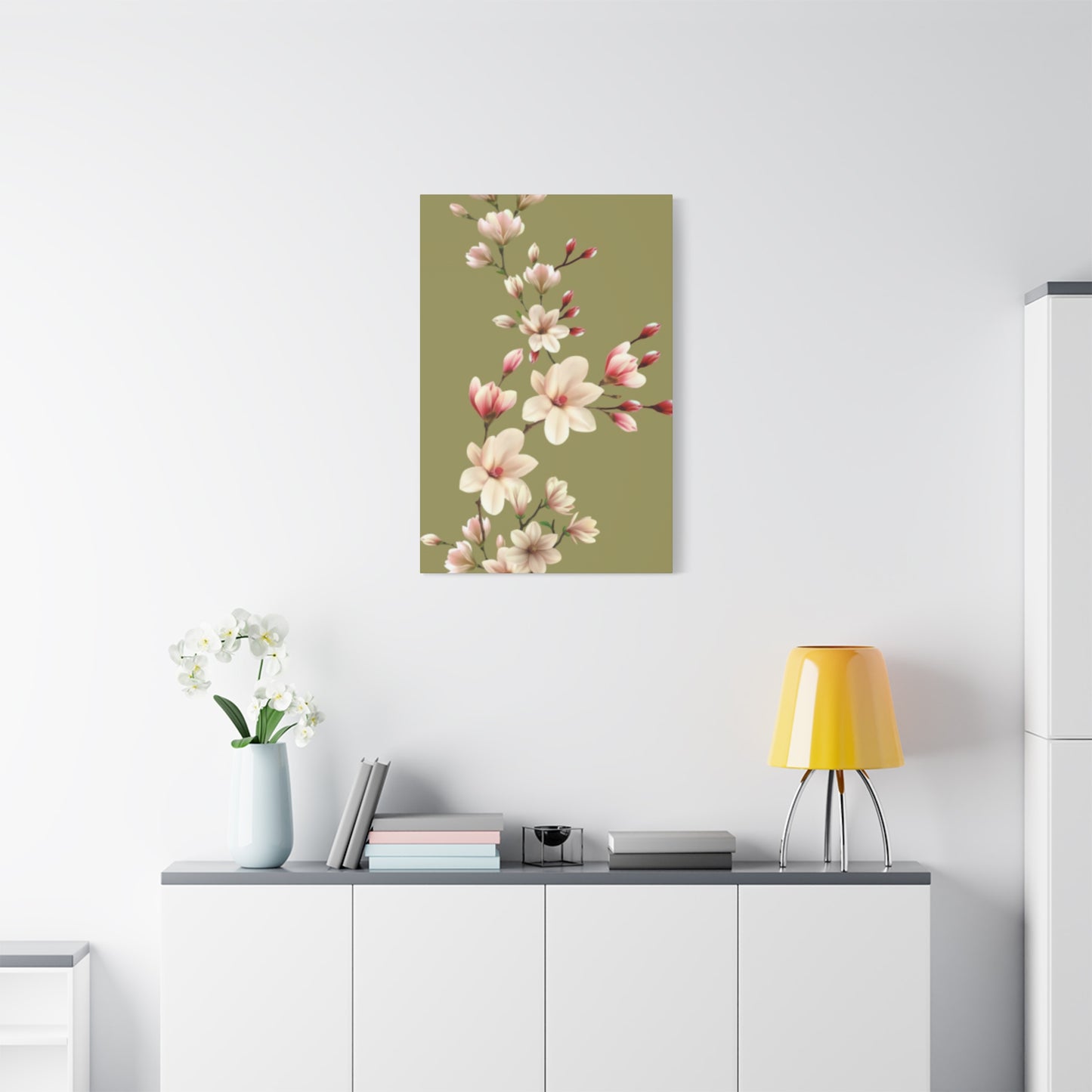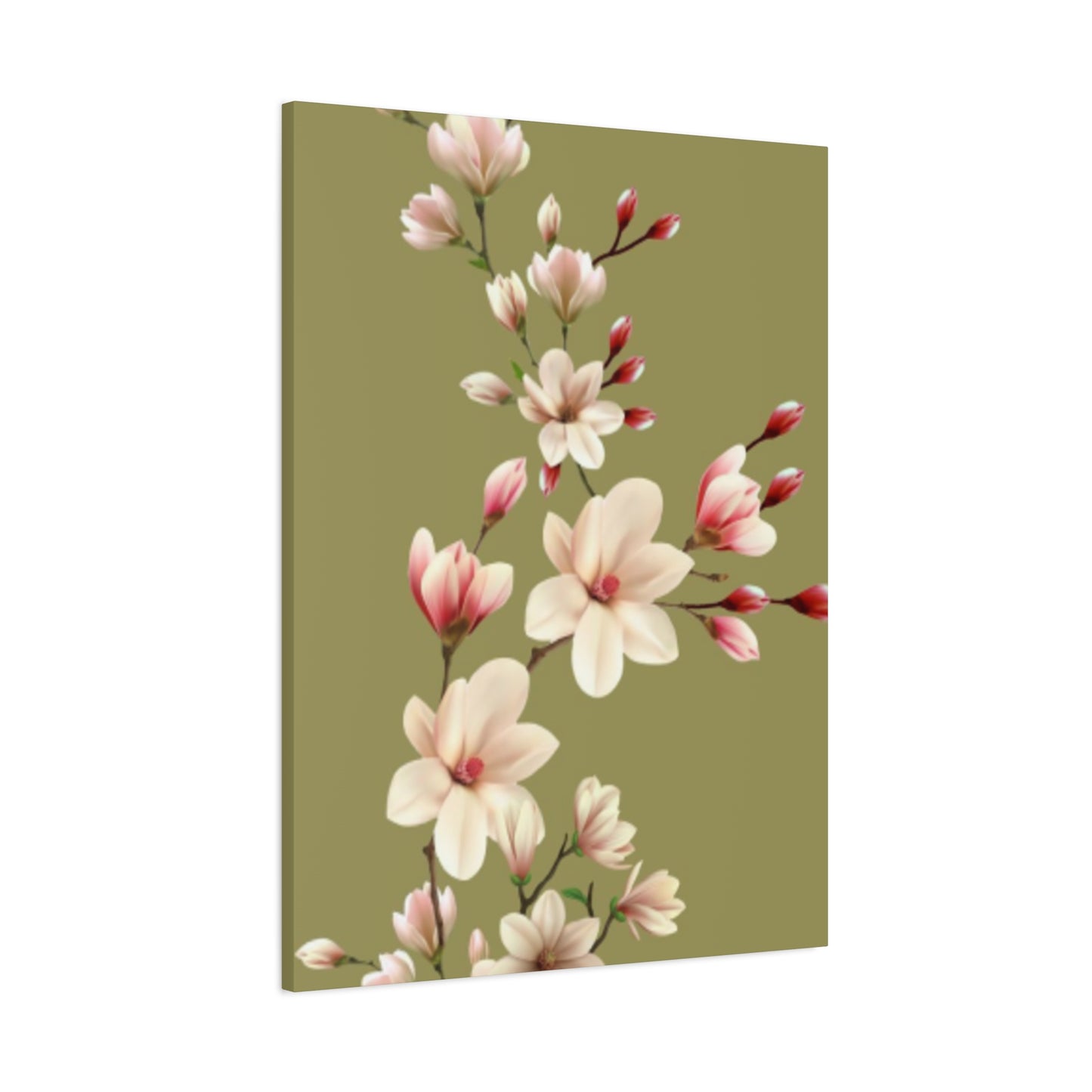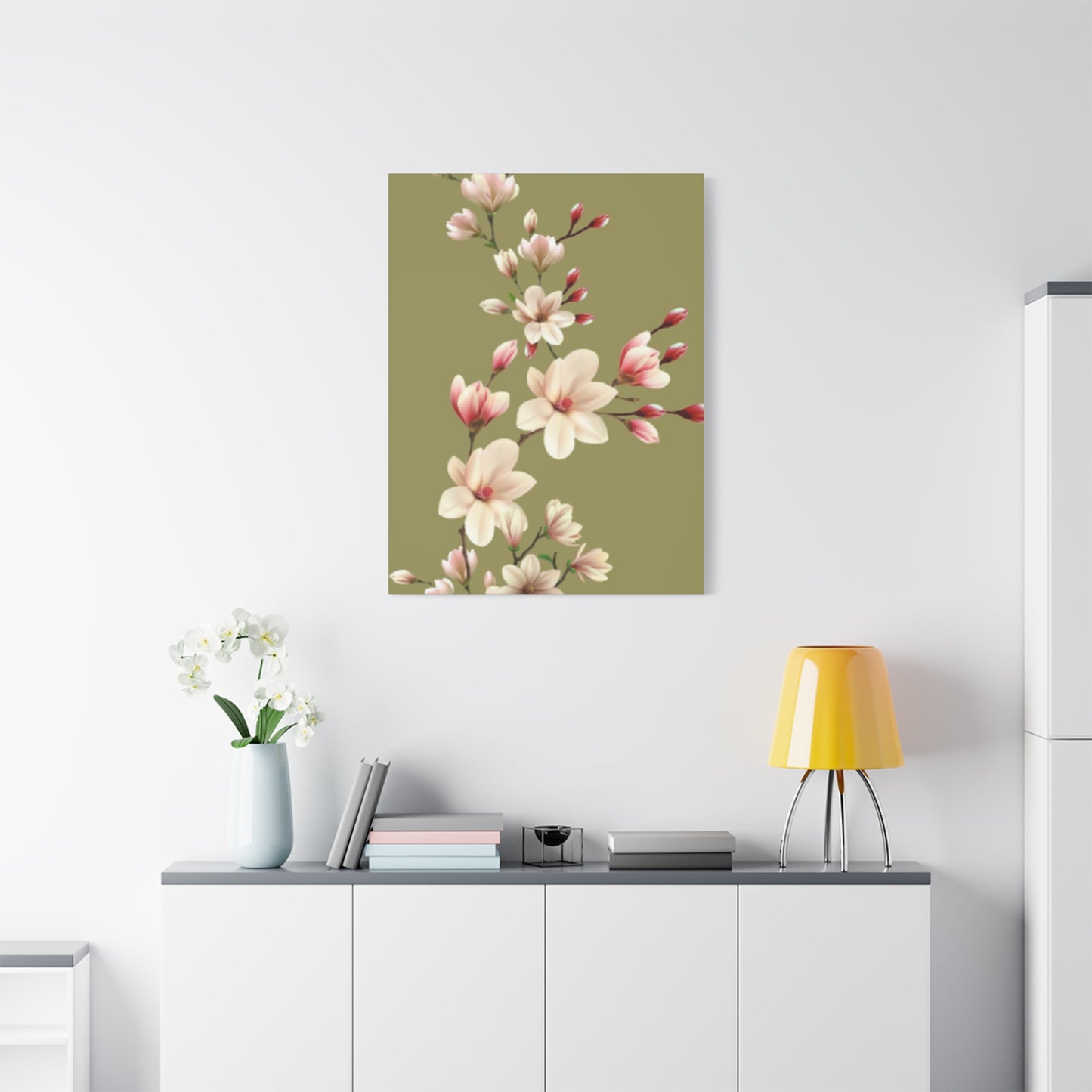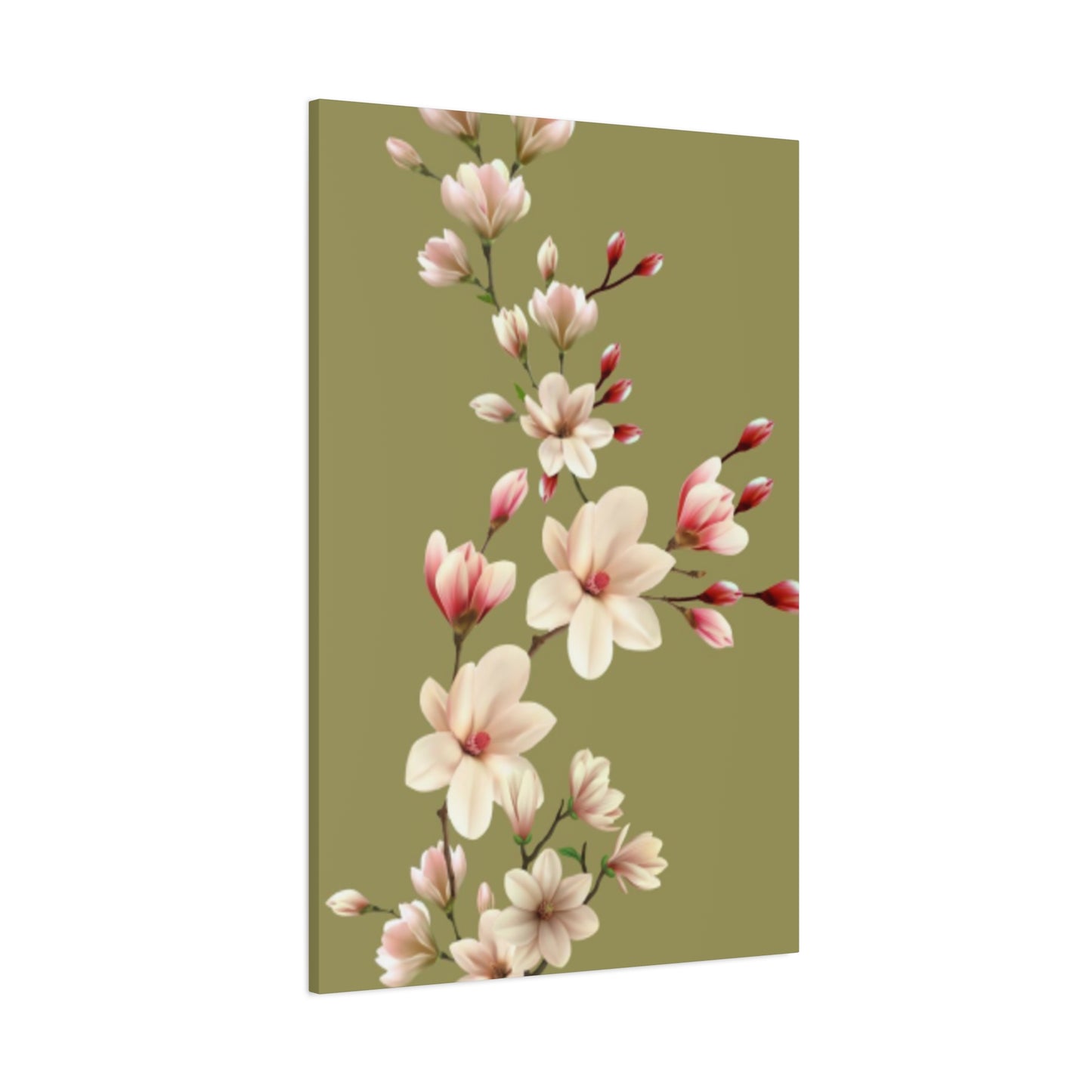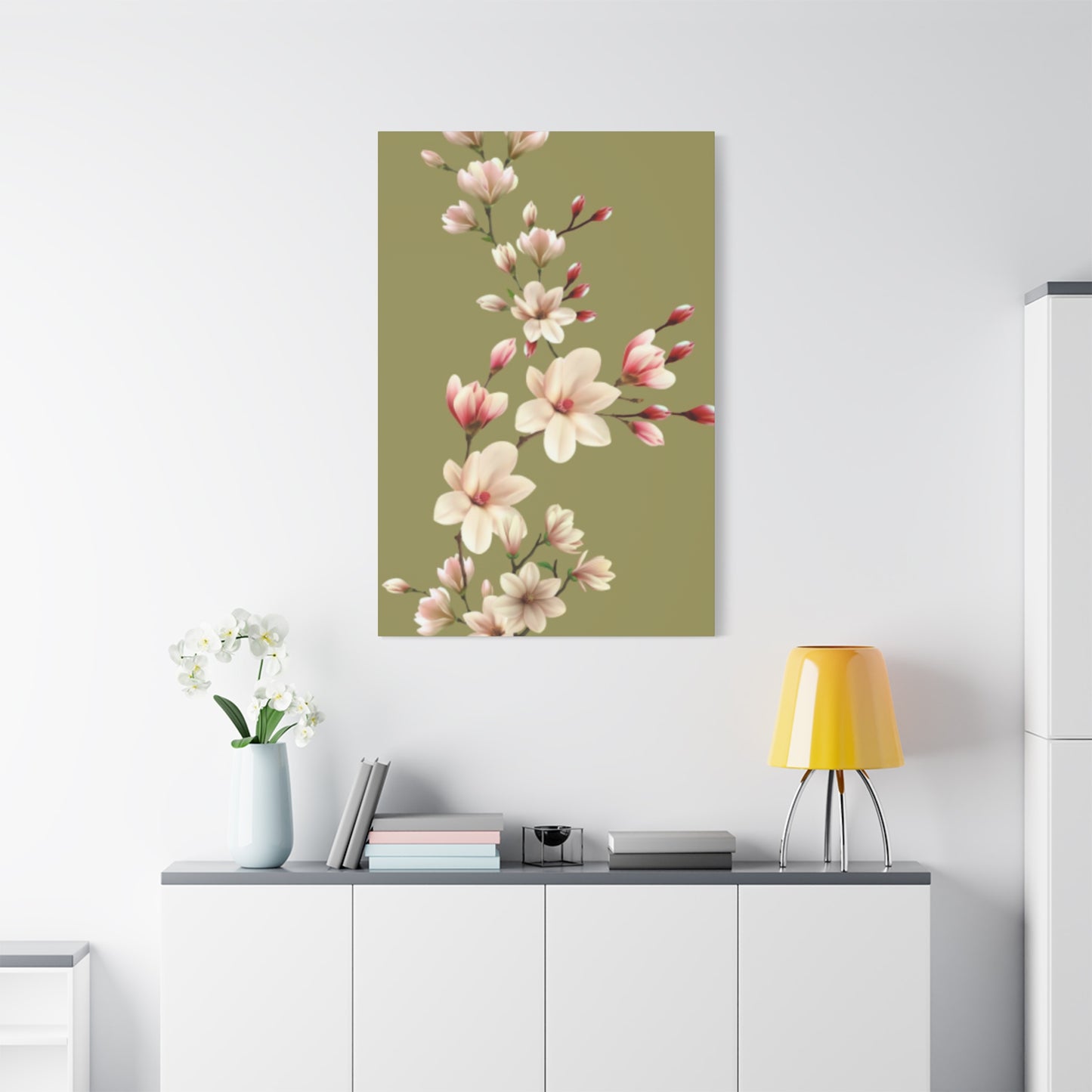Bringing Nature Indoors: Magnolia Flower Plant Wall Art for Every Living Space
Decorating your living space with botanical elements has become increasingly popular among homeowners and interior designers who seek to create serene, elegant environments. Among the countless floral options available, magnolia flower plant artwork stands out as a timeless choice that brings sophistication and natural beauty into any room. These stunning blooms, characterized by their large, creamy petals and rich green foliage, have captivated artists and nature enthusiasts for centuries, making them a perfect subject for interior decoration.
The magnolia flower represents dignity, nobility, and perseverance in various cultures around the world. When transformed into artistic pieces for your walls, these magnificent blooms can instantly elevate the aesthetic appeal of your home while creating a calming atmosphere that promotes relaxation and peace. Whether you prefer realistic botanical illustrations, abstract interpretations, watercolor renditions, or modern digital designs, magnolia-themed artwork offers endless possibilities to express your personal style and enhance your living environment.
This comprehensive resource explores everything you need to know about incorporating magnolia flower plant artwork into your home decor. From understanding different artistic styles and mediums to selecting the perfect pieces for specific rooms, we will guide you through the process of transforming your walls into captivating displays of natural beauty. You will discover how to choose appropriate sizes, colors, and framing options that complement your existing furniture and architectural features while creating visual harmony throughout your space.
Exploring Different Artistic Styles for Magnolia Floral Displays
When selecting magnolia flower plant artwork for your interior spaces, understanding the various artistic styles available helps you make informed decisions that align with your aesthetic preferences and design goals. Each artistic approach offers unique characteristics that can dramatically influence the mood and atmosphere of your rooms. Realistic botanical illustrations provide scientific accuracy and detailed representations that appeal to nature enthusiasts and those who appreciate traditional artistry. These pieces often feature meticulous attention to petal structures, leaf veins, and natural color variations that capture the true essence of magnolia blooms.
Abstract interpretations of magnolia flowers offer contemporary flair and creative freedom that resonates with modern design sensibilities. These artworks may simplify forms, experiment with unconventional color palettes, or emphasize particular aspects of the flower while minimizing others. Abstract pieces work exceptionally well in minimalist spaces or rooms featuring bold architectural elements where traditional floral art might feel too conventional. The beauty of abstract magnolia artwork lies in its ability to suggest the essence of the flower without being constrained by realistic representation.
Watercolor magnolia paintings bring soft, dreamy qualities to interior spaces through their translucent layers and gentle color transitions. The medium naturally lends itself to capturing the delicate nature of magnolia petals, with their subtle gradations from pure white to creamy ivory and pale pink. Watercolor pieces typically evoke feelings of tranquility and romance, making them ideal for bedrooms, reading nooks, or any space where you want to create a soothing ambiance. The fluid nature of watercolor also adds organic movement to static wall displays.
Photographic magnolia artwork captures the flowers in stunning detail, showcasing textures, lighting effects, and compositional elements that painters may interpret differently. High-quality magnolia photography can range from crisp, focused close-ups that reveal the intricate architecture of individual blooms to atmospheric shots that place the flowers within their natural environment. Black and white magnolia photographs offer timeless elegance and dramatic contrast that works beautifully in sophisticated, monochromatic interior schemes.
Digital art and mixed media pieces represent contemporary approaches to magnolia flower representation, often combining multiple techniques and materials to create unique visual experiences. These artworks might incorporate traditional painting or drawing with digital enhancements, collage elements, metallic accents, or three-dimensional components. Mixed media magnolia pieces can serve as striking focal points in modern or eclectic interiors where innovation and creativity are valued.
Vintage botanical prints of magnolia flowers bring historical charm and educational value to wall displays. These reproductions of antique scientific illustrations feature Latin nomenclature, detailed anatomical drawings, and the distinctive aesthetic of botanical documentation from past centuries. Such pieces appeal to collectors, history enthusiasts, and those who appreciate the intersection of science and art. Vintage botanical prints work particularly well in traditional, classical, or academic-inspired interiors.
Selecting Appropriate Sizes for Maximum Visual Impact
Choosing the correct size for your magnolia flower plant artwork significantly influences how effectively the piece enhances your space and communicates your intended design message. Understanding basic principles of scale and proportion helps you create balanced, harmonious wall displays that neither overwhelm nor disappear within your rooms. Large-scale magnolia artworks measuring three feet or more in width or height make powerful statements and work best as focal points in spacious areas such as living rooms, dining rooms, or master bedrooms. These substantial pieces command attention and can anchor entire design schemes around their presence.
Medium-sized magnolia prints and paintings, typically ranging from eighteen inches to three feet in any dimension, offer versatility that suits most residential spaces. These pieces work effectively above furniture such as sofas, beds, consoles, and dressers, where they fill wall space without overwhelming the surrounding elements. Medium-sized artworks also function well in gallery wall arrangements where they can serve as anchor pieces surrounded by smaller complementary items. The moderate scale allows for comfortable viewing from typical conversation distances within rooms.
Small magnolia artwork, generally under eighteen inches in any dimension, provides opportunities for creating intimate displays, filling narrow wall spaces, or developing extensive gallery collections. These compact pieces work beautifully in powder rooms, small hallways, stairwell walls, or clustered together to form larger visual compositions. Small-scale artwork also allows collectors to acquire multiple pieces representing different artistic styles or magnolia varieties without requiring extensive wall space or substantial financial investment.
When determining appropriate artwork size, consider the wall dimensions where the piece will hang. Design professionals typically recommend that artwork or artwork groupings occupy approximately two-thirds to three-quarters of the width of the furniture below it, creating visual balance between horizontal elements. For walls without furniture, consider the overall wall dimensions and surrounding architectural features such as windows, doors, and built-in elements that influence available display space.
Ceiling height also affects ideal artwork size selection. In rooms with standard eight-foot ceilings, avoid hanging extremely large pieces that make the space feel cramped or disproportionate. Conversely, in rooms with high ceilings or two-story spaces, larger artworks help fill vertical space appropriately and maintain visual connection between floor and ceiling planes. Consider how the artwork will be viewed from various positions within the room, ensuring that its size allows comfortable appreciation from the most common viewing locations.
Multiple small or medium pieces arranged together can create the visual impact of a single large artwork while offering more flexibility in arrangement and easier installation. Diptychs, triptychs, and larger multi-panel sets featuring magnolia themes provide contemporary alternatives to traditional single-frame presentations. These arrangements allow you to customize spacing, orientation, and configuration to suit your specific wall dimensions and personal preferences while maintaining thematic cohesion.
Choosing Color Palettes That Enhance Your Existing Decor
The color palette of your magnolia flower plant artwork plays a crucial role in how successfully the piece integrates with your existing interior design scheme. While magnolia flowers are commonly associated with pure white or cream petals, artwork featuring these blooms comes in diverse color interpretations that can either complement or contrast with your room's established palette. Traditional white and cream magnolia artwork offers timeless elegance that coordinates effortlessly with nearly any color scheme, making these pieces safe choices for those uncertain about color coordination or planning to redecorate in the future.
Soft pink and blush-toned magnolia artworks introduce gentle warmth and romantic sensibility to spaces without introducing bold color statements that might conflict with existing furnishings. These subtle hues work particularly well in bedrooms, dressing areas, and feminine spaces where soft, nurturing atmospheres are desired. Pink magnolia pieces also complement neutral color schemes by adding just enough color interest to prevent rooms from feeling bland while maintaining overall restraint.
For spaces featuring cool color palettes with blues, greens, and grays, consider magnolia artwork that incorporates foliage or background elements in coordinating cool tones. Pieces showing magnolia branches with lush green leaves against blue or gray skies create natural color harmony with cool-toned interiors. Artwork with silver, pewter, or slate gray matting and frames can further reinforce cool color schemes while the magnolia blooms themselves provide elegant white or cream focal points.
Warm-toned interiors featuring beiges, taupes, golds, and earth tones benefit from magnolia artwork with warmer backgrounds or sepia-toned treatments. Vintage-style magnolia prints on aged paper, pieces with gold leaf accents, or paintings featuring warm lighting effects complement warm color schemes beautifully. Consider frames in honey-toned wood, antiqued gold, or warm bronze finishes that reinforce the overall temperature of your color palette.
Monochromatic and minimalist spaces offer opportunities to use magnolia artwork as either harmonious neutral elements or strategic pops of subtle color. Black and white magnolia photography maintains minimalist aesthetic while adding organic subject matter to spare interiors. Alternatively, monochromatic spaces in beige or gray can be gently warmed or cooled respectively through careful selection of magnolia artwork with subtle color biases that shift the overall room temperature without disrupting the restrained palette.
Bold, colorful interiors with saturated hues benefit from neutral magnolia artwork that provides visual rest areas among vibrant surroundings. Large white magnolia paintings or prints create breathing space in colorful rooms, preventing visual overwhelm and allowing the eye to rest before engaging with more chromatic elements. Conversely, if your colorful room features specific accent colors, consider magnolia artwork with complementary background or mat colors that echo your existing accent hues, creating intentional color connections throughout the space.
Framing Options That Complement Your Interior Style
Selecting appropriate frames for your magnolia flower plant artwork significantly impacts how the pieces present themselves within your rooms and whether they harmonize with or compete against surrounding design elements. The frame serves as a transition between artwork and wall, and choosing wisely ensures that frames enhance rather than detract from the magnolia images they contain. Traditional wood frames in warm finishes such as cherry, walnut, or mahogany bring classic elegance to magnolia artwork and work beautifully in traditional, transitional, and classical interior styles where ornate moldings, rich fabrics, and substantial furniture pieces predominate.
Painted wood frames in white, cream, or soft gray offer versatility that suits both traditional and contemporary spaces while maintaining a lighter, more casual feel than stained wood. These frames work particularly well for coastal, cottage, farmhouse, and shabby chic design styles where whitewashed or painted finishes are common throughout the space. White frames also allow magnolia artwork to take center stage without competing visual weight from dark or heavily grained frame materials.
Metal frames in finishes such as brushed nickel, matte black, polished chrome, or brass provide contemporary sophistication that complements modern, industrial, and minimalist interiors. Thin metal frames offer sleek, understated presentation that maintains focus on the artwork itself without adding visual bulk. Metal frames in warm finishes like brass or copper coordinate beautifully with warm-toned interiors and can add subtle glamour to spaces featuring metallics in light fixtures, hardware, or accessories.
Ornate frames with decorative molding, carved details, or gilded finishes bring formal elegance to magnolia artwork and suit traditional, Victorian, French country, or maximalist interior styles. These substantial frames make bold statements and work best with similarly formal artwork such as classical botanical illustrations or oil paintings. When using ornate frames, ensure that the magnolia artwork itself has sufficient visual weight to hold its own against the decorative frame without being overwhelmed.
Floating frames and shadow box presentations create contemporary, gallery-style displays that emphasize the artwork while adding dimensional interest to wall presentations. These framing styles suspend artwork slightly away from the backing, creating shadows and depth that add sophistication to displays. Floating frames work particularly well with canvas prints, thick paper stock, or dimensional pieces where the edges and thickness of the artwork itself contribute to the overall aesthetic.
Natural wood frames with visible grain and minimal finishing bring organic, earthy qualities that reinforce the botanical nature of magnolia subject matter. These frames coordinate beautifully with natural interior styles including Scandinavian, Japanese-inspired, organic modern, and rustic designs where wood tones and natural materials feature prominently. Light wood frames in maple, ash, or oak create casual, approachable presentations while darker woods add gravitas and formality.
Incorporating Magnolia Artwork in Living Room Spaces
Living rooms serve as primary gathering spaces where families relax, entertain guests, and spend considerable time, making them ideal locations for impactful magnolia flower plant artwork that enhances comfort and beauty. Large-scale magnolia pieces work exceptionally well above sofas, where they provide focal points that anchor seating areas and establish visual hierarchy within the room. When hanging artwork above a sofa, position the bottom edge approximately eight to ten inches above the furniture back, creating visual connection between artwork and seating while maintaining appropriate separation.
For living rooms with fireplaces, magnolia artwork above the mantel creates classic, elegant presentations that draw eyes naturally to the architectural focal point. Mantels provide built-in ledges that can incorporate dimensional elements such as candlesticks, vases, or small sculptures that complement the magnolia theme above. Consider the mantel depth and any items you plan to display when selecting artwork size, ensuring sufficient clearance for both artwork and decorative objects without crowding.
Gallery walls featuring multiple magnolia pieces in various sizes create dynamic, personalized displays that reflect individual taste and allow for flexible arrangement. When creating gallery walls, start by arranging pieces on the floor to experiment with different configurations before committing to wall placement. Maintain consistent spacing between frames, typically two to three inches, to create unified presentations rather than disconnected clusters. Gallery walls work particularly well on large, empty walls in living rooms where single pieces might appear lost or insufficient.
Magnolia artwork displayed on console tables or sideboards using easels or picture stands offers flexibility that allows seasonal rotation or frequent refreshing of displays without wall damage. This presentation style works well in living rooms where you enjoy changing decor regularly or in rental properties where wall holes should be minimized. Leaning large magnolia artwork against walls on mantels or consoles creates relaxed, collected-over-time aesthetics popular in contemporary casual interiors.
Symmetrical pairs of magnolia artwork flanking windows, doorways, or architectural features bring formal balance to living rooms and work particularly well in traditional or transitional design schemes. Matching pairs create intentional rhythm and order that satisfies our innate appreciation for symmetry and proportion. Ensure that paired pieces truly match in size, framing, and style to maintain the harmonious effect; near-matches often appear accidental rather than intentional.
Corner spaces in living rooms often go underutilized but present excellent opportunities for magnolia artwork that transforms dead space into design assets. Vertical magnolia pieces work particularly well in corners where they draw eyes upward and make rooms feel more spacious. Consider corner placement for smaller artwork collections where prime wall real estate is limited or for creating intimate vignettes that reward close inspection.
Enhancing Bedroom Serenity With Magnolia Floral Art
Bedrooms benefit enormously from magnolia flower plant artwork that promotes relaxation, tranquility, and restful sleep through soft colors, gentle subject matter, and calming compositions. The serene nature of magnolia blooms makes them particularly appropriate for bedroom displays where overstimulating or energetic artwork might interfere with the room's primary function as a restful retreat. Positioning magnolia artwork above the bed creates an immediate focal point visible upon entering the room and provides something beautiful to contemplate from the comfort of your pillows.
When selecting magnolia artwork for bedrooms, prioritize pieces with soft color palettes, minimal contrast, and gentle compositions that promote calm rather than excitement. Watercolor magnolia paintings work exceptionally well in bedrooms where their dreamy, ethereal qualities reinforce restful atmospheres. Avoid artwork with harsh contrasts, vibrant colors, or agitated compositions that might feel too stimulating for spaces dedicated to sleep and relaxation.
Dresser walls provide excellent locations for medium-sized magnolia artwork that fills space above furniture without overwhelming the room. These pieces should relate in scale to the dresser below, generally spanning one-half to two-thirds of the furniture width. Magnolia artwork above dressers becomes part of daily grooming routines, offering moments of beauty during morning and evening rituals. Consider how the artwork will be viewed from bed as well as while standing at the dresser to ensure it works from multiple perspectives.
Bedroom sitting areas or reading nooks benefit from more intimate magnolia artwork that creates cozy, personal spaces within larger rooms. Smaller framed pieces or collections of botanical prints featuring magnolia details such as single blooms, leaves, or buds work beautifully in these secondary bedroom zones. These intimate artworks reward close viewing and create incentives to spend time in reading chairs or window seats where relaxation and quiet contemplation are goals.
Master bedroom suites often include sufficient wall space for creating small gallery arrangements featuring coordinated magnolia pieces in various sizes and styles. These collections personalize spaces and allow gradual accumulation of meaningful artwork over time. Maintaining a cohesive theme through magnolia subject matter unifies diverse pieces even when they vary in style, medium, or artist, creating collected sophistication rather than random assemblage.
Magnolia artwork in guest bedrooms welcomes visitors with beauty and tranquility while remaining neutral enough to suit diverse personal preferences. Since guest rooms accommodate people with varying tastes, magnolia pieces offer universally appealing subject matter that rarely provokes strong negative reactions. Selecting classic, timeless magnolia artwork for guest spaces ensures that pieces remain appropriate through changing design trends and household circumstances.
Creating Sophisticated Dining Room Displays
Dining rooms present formal opportunities for magnolia flower plant artwork that enhances the experience of gathering around meals and emphasizes hospitality and elegance. The traditional association between magnolia flowers and Southern hospitality makes them particularly appropriate for dining spaces where welcoming guests and creating memorable experiences are primary objectives. Large-scale magnolia artwork above buffets or sideboards creates dramatic backdrops for dining room presentations and provides visual interest during meals when diners face these walls.
Magnolia artwork above dining tables requires careful consideration of scale and hanging height to ensure pieces enhance rather than dominate the dining experience. Artwork should typically hang at least six inches above any buffet or sideboard below to prevent visual collision between furniture and art. For artwork hung on walls without furniture below, position pieces so their centers fall at approximately 57 to 60 inches from the floor, following museum standards that accommodate average human eye level.
Formal dining rooms benefit from traditional magnolia artwork such as botanical illustrations, oil paintings, or classical still life compositions featuring magnolia branches in elegant vessels. These formal pieces reinforce the special-occasion nature of dedicated dining rooms and coordinate beautifully with traditional furniture, crystal chandeliers, and fine china. Consider artwork framing that echoes other metallic finishes in the dining room, such as matching frame color to chandelier finish for subtle coordination.
Casual dining areas and breakfast nooks welcome more relaxed magnolia artwork presentations such as simple framed prints, photographic compositions, or contemporary interpretations that reflect everyday living rather than formal entertaining. These spaces benefit from artwork that brings beauty without stuffiness, creating pleasant environments for quick weekday meals as well as leisurely weekend breakfasts. Smaller magnolia pieces or informal gallery arrangements work well in casual dining spaces.
Dining room accent walls painted in deep, dramatic colors provide stunning backdrops for magnolia artwork that pops against rich backgrounds. White or cream magnolia blooms create striking contrast against navy, charcoal, deep green, or burgundy walls, making both the artwork and wall color appear more vivid through simultaneous contrast. This dramatic approach works well in dining rooms where bold statements are appropriate and where lighting can be controlled to prevent the space from feeling oppressive.
Multiple dining room walls often remain bare in homes where furniture placement leaves several walls available for artwork. Creating coordinated magnolia displays on multiple walls unifies the room and prevents any single wall from feeling overwhelmed with visual weight. Consider using complementary magnolia pieces that share similar style, color palette, or framing but offer variation in composition or specific botanical details for interest without monotony.
Refreshing Kitchen Interiors With Botanical Beauty
Kitchens benefit from magnolia flower plant artwork that brings natural beauty into hardworking spaces often dominated by appliances, cabinetry, and functional considerations. While kitchens present challenging display environments due to moisture, temperature fluctuations, and grease exposure, careful selection and placement of magnolia artwork can successfully enhance these important spaces. Small to medium-sized magnolia prints work well in kitchens where wall space is limited and frequently interrupted by windows, cabinets, and functional fixtures.
Above-sink areas provide popular locations for kitchen artwork where pieces remain visible during food preparation and cleanup activities that occupy significant time. Magnolia artwork positioned above sinks creates pleasant focal points that make routine tasks more enjoyable through visual interest and natural beauty. Ensure that artwork in these locations features moisture-resistant framing and hangs high enough to avoid direct contact with water splashes from sink activities.
Breakfast nook walls offer excellent opportunities for magnolia artwork that enhances morning coffee rituals and quick meals throughout the day. These semi-separated spaces within kitchens can accommodate slightly larger artwork than might work elsewhere in the room, creating cozy, café-like atmospheres. Botanical collections featuring magnolia blooms, buds, and foliage bring educational interest that entertains during meals and provides conversation starters for family and guests.
Open shelving displays in kitchens allow integration of small framed magnolia artwork among dishes, cookbooks, and decorative objects, creating layered, collected presentations. Propping small magnolia prints on plate stands or in easels offers flexibility that allows seasonal rotation and prevents commitment to permanent wall placement. This casual approach suits farmhouse, cottage, and eclectic kitchen styles where perfectly curated presentations give way to more relaxed, personal arrangements.
Kitchen gallery walls can incorporate magnolia artwork within broader collections featuring food-related prints, vintage advertising, family photos, or recipe cards. Magnolia pieces add botanical beauty that balances more literal kitchen-specific imagery and provides respite from purely functional or culinary themes. Maintaining consistent framing style or color creates unity when combining diverse subject matter on kitchen gallery walls.
Large kitchens with dedicated dining areas or islands with seating benefit from more substantial magnolia artwork that defines zones within open-plan spaces. Large pieces hung above eating areas help psychologically separate dining zones from cooking zones even in unified rooms without physical barriers. This artwork creates destinations that draw people into kitchen spaces for gathering beyond purely functional food preparation activities.
Transforming Bathroom Spaces Into Personal Retreats
Bathrooms provide intimate opportunities for magnolia flower plant artwork that transforms utilitarian spaces into personal spa-like retreats where beauty and self-care intersect. The clean, fresh appearance of magnolia blooms naturally complements bathroom functions and creates associations with cleanliness, purity, and renewal. Small to medium magnolia pieces work best in most bathrooms where wall space is limited and frequently interrupted by mirrors, windows, and fixtures.
Above-toilet areas present popular bathroom artwork locations that fill otherwise unused vertical space and create visual interest in zones that might otherwise feel neglected. Magnolia artwork positioned here remains visible when standing at sinks and provides pleasant focal points that elevate everyday bathroom experiences. Ensure proper hanging height that allows for comfortable viewing while standing and sitting, typically positioning artwork centers around 60 inches from the floor.
Bathroom vanity walls often feature large mirrors that limit available artwork space, but flanking areas beside mirrors offer opportunities for vertical magnolia pieces that frame the mirror and create balanced, intentional compositions. Narrow vertical artworks work particularly well in these locations where width is constrained but height is available. Coordinating frame finishes with mirror frames and light fixture metals creates cohesive design that appears thoughtfully planned.
Powder rooms allow for bolder magnolia artwork choices since guests spend limited time in these small spaces and can appreciate distinctive pieces without extended exposure. Consider using powder rooms to display special magnolia artwork that might feel too dramatic for larger rooms where you spend more time. These secondary bathrooms provide low-stakes opportunities to experiment with styles, colors, or treatments you might not commit to elsewhere.
Spa-like master bathrooms benefit from serene magnolia artwork that reinforces relaxation goals and creates sanctuary atmospheres. Watercolor magnolia paintings work particularly well in these spaces where soft, soothing aesthetics support the room's purpose as a retreat from daily stress. Consider positioning artwork where it will be visible from the bathtub, creating beautiful focal points during extended soaking sessions designed for relaxation and rejuvenation.
Bathroom artwork requires special attention to moisture protection, particularly in bathrooms without adequate ventilation where humidity levels remain high. Choose magnolia pieces with sealed frames, glass rather than acrylic glazing that won't yellow or fog, and backing boards that resist moisture damage. Avoid displaying valuable original artwork in bathrooms where environmental conditions may cause deterioration over time; reserve these spaces for affordable prints that can be replaced if necessary.
Incorporating Magnolia Art in Home Office Environments
Home offices benefit from magnolia flower plant artwork that brings natural beauty into work environments without introducing distraction that hampers productivity. The calm, dignified nature of magnolia blooms makes them appropriate for professional spaces where you want to project competence and sophistication through your surroundings. Medium-sized magnolia pieces work well in home offices where they provide visual interest without overwhelming spaces that typically accommodate desks, filing cabinets, shelving, and technology equipment.
Behind-desk walls create natural focal points for magnolia artwork that becomes part of your background during video conferences and virtual meetings. Consider how artwork in this location will appear to others viewing you on camera, ensuring that pieces enhance rather than distract from your professional image. Neutral, classic magnolia artwork presents safely in professional contexts while botanical subjects demonstrate appreciation for nature and environmental awareness.
Desk-facing walls allow you to enjoy magnolia artwork throughout work sessions, providing opportunities for visual breaks that rest your eyes and refresh your mind during intensive work periods. Positioning artwork at comfortable viewing distance from your desk chair ensures that you can appreciate details without straining. Calming magnolia pieces can help reduce work-related stress and create more pleasant home office environments where you may spend many hours daily.
Home office gallery walls can combine magnolia artwork with professional credentials, achievement recognition, inspirational quotes, and family photos, creating personalized spaces that balance professional and personal identity. Magnolia pieces within these collections add beauty and sophistication that elevates the overall presentation beyond purely professional or purely decorative categories. Maintaining cohesive framing or matting creates unity among diverse elements.
Corner desks often position workers facing walls at angles where traditional artwork placement becomes awkward. In these configurations, consider positioning magnolia artwork on adjacent walls where it enters your peripheral vision without requiring direct focus, providing subconscious beauty that influences mood without demanding attention. This subtle approach works well for maintaining concentration while benefiting from artwork's presence.
Standing desk areas benefit from magnolia artwork positioned higher on walls where it remains visible while you work in elevated positions. Adjust hanging height to accommodate both seated and standing work positions if you alternate throughout the day, finding compromise positions that work reasonably well for both postures. Magnolia pieces with vertical orientations often work better with standing desks than horizontal compositions that feel awkward when viewed from standing height.
Styling Entryways and Hallways With Welcoming Florals
Entryways create first impressions for visitors and establish design themes that flow throughout homes, making them strategic locations for magnolia flower plant artwork that welcomes guests with natural beauty. The gracious associations of magnolia flowers make them particularly appropriate for entry displays where hospitality and welcome are primary goals. Medium to large magnolia pieces make statements in foyer areas that set positive tones for the rest of the home's design.
Console table walls in entryways provide perfect locations for magnolia artwork that creates vignettes with table lamps, decorative objects, and functional items such as key bowls or mail holders. These layered presentations add depth and sophistication to entries while maintaining functionality. Magnolia artwork in foyers benefits from sufficient lighting that illuminates pieces for visitors and prevents entryways from feeling dark or unwelcoming.
Hallway galleries featuring multiple magnolia pieces create interest in transitional spaces that often lack architectural distinction or natural focal points. Long hallways particularly benefit from multiple artwork pieces that create rhythm and draw people forward through the space. Maintaining consistent vertical hanging height creates intentional lines that unify displays even when individual pieces vary in size or content.
Stairwell walls offer challenging but rewarding opportunities for magnolia artwork that must be carefully scaled and positioned to work from multiple viewing levels as people ascend and descend stairs. Consider how pieces will appear from both upstairs and downstairs perspectives, avoiding placements where artwork appears awkwardly positioned from one level or the other. Stairwells often feature substantial vertical height that accommodates impressive magnolia pieces too large for standard rooms.
Narrow hallways benefit from smaller magnolia pieces or vertical orientations that respect limited width while utilizing available height. These constrained spaces work well for creating focused collections of botanical prints featuring magnolia details rather than attempting to display large statement pieces that overwhelm the architecture. Proper lighting becomes particularly important in hallways where natural light may be limited.
Entry area hooks and benches often occupy lower wall sections, leaving upper areas available for magnolia artwork that fills space above functional elements. These combinations of beauty and utility create welcoming, complete entries that address both practical needs and aesthetic desires. Ensure that artwork hangs high enough to clear hooks, hats, and other hanging items without awkward visual conflicts.
Selecting Magnolia Artwork for Small Space Living
Small apartments and compact rooms require thoughtful magnolia flower plant artwork selection that enhances rather than overwhelms limited square footage and wall space. Scale becomes particularly critical in small spaces where oversized artwork can make rooms feel cramped and claustrophobic while undersized pieces may appear lost or insignificant. Medium-sized magnolia pieces often work best in small rooms where they provide impact without dominating the environment.
Light-colored magnolia artwork featuring white or cream blooms against pale backgrounds helps maintain visual openness in small spaces where dark or heavily saturated artwork might make rooms feel smaller and more confined. The airy nature of magnolia florals supports visual expansion goals common in small space decorating. Consider artwork with significant negative space that allows walls to breathe rather than pieces with busy, dense compositions.
Vertical magnolia artwork draws eyes upward in small rooms with standard ceiling heights, creating impressions of greater height and spaciousness. Tall, narrow pieces work particularly well in small spaces where horizontal wall space is precious but vertical dimensions remain underutilized. This orientation naturally leads eyes skyward, psychologically expanding rooms beyond their actual dimensions.
Multi-functional magnolia artwork such as pieces incorporating mirrors, hidden storage, or removable components serves double duty in small spaces where every element should justify its presence. While less common than purely decorative artwork, these hybrid pieces offer practical benefits alongside beauty. Alternatively, consider magnolia artwork that can be easily rotated seasonally, providing decorative variety without requiring storage space for multiple permanent displays.
Gallery walls in small spaces should be carefully curated to avoid overwhelming rooms with too many elements competing for attention. Limiting gallery walls to three to five coordinated magnolia pieces often works better than extensive collections that create visual clutter. Maintaining significant blank wall space around gallery groupings allows collections to register as intentional designs rather than desperate attempts to fill every available surface.
Corner placement works particularly well in small spaces where traditional furniture arrangements may leave corner walls exposed. Magnolia artwork positioned in corners draws attention to these often-wasted spaces while avoiding prime wall real estate needed for functional furniture placement. This strategic approach maximizes both aesthetic and practical goals within constrained environments.
Understanding Different Print Methods and Quality Levels
The method used to produce magnolia flower plant artwork significantly affects its appearance, longevity, and value, making understanding print technologies important when selecting pieces for your home. Giclée printing represents the highest quality digital reproduction method, using archival inks and premium papers or canvases to create museum-quality prints that closely match original artwork. These prints feature exceptional color accuracy, fine detail, and longevity, making them worthy investments for serious collectors and those who value quality.
Lithographic prints use traditional printing techniques that transfer images through chemical processes on stone or metal plates, creating limited edition artworks valued for their connection to historical printmaking methods. Original lithographs created by artists carry greater value than reproductions, but both offer unique aesthetic qualities distinct from photographic or digital reproduction. Lithographic magnolia prints often feature characteristic grain and texture that contribute to their charm.
Canvas prints transfer photographic or digital images onto canvas material stretched over wooden frames, creating affordable alternatives to oil paintings. These prints offer textural interest and gallery-ready presentation without requiring separate framing. Quality varies significantly among canvas prints depending on resolution, printer quality, canvas weight, and stretching technique. High-quality canvas prints can provide excellent value and attractive results when properly produced.
Paper prints encompass wide quality ranges from basic inkjet prints on standard paper to archival fine art prints on premium substrates. When selecting paper magnolia prints, investigate paper weight, surface quality, ink type, and expected longevity. Acid-free papers and archival inks resist yellowing and fading better than economy materials, justifying higher costs for pieces you intend to display long-term in visible locations.
Photographic prints of magnolia flowers vary based on printing process, paper type, and finishing. Traditional photographic development produces continuous tone images with smooth color transitions, while digital photo printing uses inkjet technology on photo papers optimized for durability and color vibrancy. Professional photo labs generally produce superior results compared to consumer printing services, with better color management and quality control.
Original artwork including paintings, drawings, and watercolors represents the highest value category but requires significantly greater investment than reproductions. Original magnolia artwork offers unique, one-of-kind pieces that cannot be exactly replicated, appealing to serious collectors and those desiring exclusive possessions. Evaluating original artwork requires attention to artist reputation, technique, materials, and overall execution quality beyond simply admiring the subject matter.
Caring For and Maintaining Your Magnolia Wall Art
Proper care and maintenance ensure that your magnolia flower plant artwork remains beautiful and well-preserved throughout its display life. Understanding appropriate cleaning methods, environmental concerns, and preservation techniques protects your investment and maintains visual appeal. Dusting artwork regularly using soft, dry microfiber cloths or specialized dusting tools prevents accumulation that dulls appearance and potentially attracts moisture that could damage paper or other materials.
Framed artwork behind glass requires careful cleaning that avoids streaking and potential moisture infiltration. Use glass cleaner sparingly on lint-free cloths rather than spraying directly onto glass to prevent liquid from seeping behind glazing where it might damage artwork or matting. Clean glass edges carefully without allowing moisture to contact frame joints where it could penetrate the frame package.
Canvas prints without glazing accumulate dust that should be gently removed using soft brushes or vacuum attachments set to low suction. Avoid touching canvas surfaces with bare hands where skin oils could transfer and cause staining or deterioration over time. For stubborn dirt on canvas, consult professional conservators rather than attempting aggressive cleaning that might damage the print or its protective coatings.
Environmental control significantly impacts artwork longevity, with excessive heat, humidity, and light exposure being primary concerns. Position magnolia artwork away from direct sunlight that fades colors over time, particularly watercolors, photographs, and prints using non-archival inks or papers. If sun exposure is unavoidable, consider UV-protective glazing that filters harmful wavelengths without completely blocking natural light.
Conclusion
Bringing Nature Indoors: Magnolia Flower Plant Wall Art for Every Living Space highlights the transformative power of botanical-inspired artwork to enrich interiors with beauty, calm, and sophistication. Magnolia flowers, with their graceful form, delicate petals, and subtle fragrance in nature, are ideal subjects for wall art that combines visual appeal with emotional resonance. When translated into paintings, prints, or canvases, these floral designs bring the serenity of nature into the home, creating spaces that feel alive, nurturing, and aesthetically harmonious.
At the heart of magnolia wall art lies its timeless elegance. The flower symbolizes dignity, perseverance, and natural beauty, qualities that resonate deeply in interior spaces. Its large, sculptural petals and soft, rounded shapes create visual interest and evoke a sense of serenity. Rendered in subtle tones of white, blush, or soft pastels, magnolia art complements a wide range of color palettes, enhancing both neutral minimalist interiors and richly textured, eclectic spaces. Whether showcased as a central piece or as part of a gallery wall, magnolia art introduces softness, balance, and sophistication, making every room feel more welcoming and refined.
From a design perspective, magnolia flower wall art offers remarkable versatility. In living rooms, a large canvas of a blooming magnolia can serve as a calming focal point above a sofa or console, instantly elevating the room’s ambiance. In bedrooms, the gentle shapes and muted tones create a peaceful retreat, encouraging relaxation and restfulness. Even in dining areas or hallways, magnolia imagery adds a touch of natural elegance that harmonizes with furniture, textiles, and décor accents. Its adaptability ensures that it fits seamlessly into modern, traditional, bohemian, or contemporary design schemes, offering beauty that transcends trends.
Lighting enhances the delicate allure of magnolia artwork. Natural sunlight brings out the subtle textures of petals and leaves, highlighting depth and nuance, while soft ambient or accent lighting can enhance tonal contrasts and create a warm, inviting glow. Properly illuminated magnolia prints or paintings become more than decoration; they become immersive visual experiences, drawing attention and encouraging contemplation. The interplay between light and the artwork mirrors the organic vitality of the flower itself, bringing a sense of dynamic life to static walls.
Beyond its aesthetic qualities, magnolia wall art fosters a psychological and emotional connection to nature. Bringing plant imagery indoors has been shown to reduce stress, promote relaxation, and enhance overall well-being. Magnolias, in particular, embody purity and renewal, offering a visual metaphor for personal growth and serenity. Displaying magnolia art in a home encourages mindfulness, reflection, and emotional balance, turning everyday spaces into sanctuaries of calm and beauty.
Artists utilize a variety of techniques to capture the magnolia’s elegance. Detailed botanical illustrations emphasize realism and scientific accuracy, while impressionistic or abstract styles highlight color, light, and movement. Digital prints, watercolor washes, and textured oil paintings each offer unique interpretations, allowing homeowners to select artwork that aligns with their aesthetic vision and emotional preference. This diversity of style ensures that magnolia art can adapt to multiple environments and resonate with a broad audience.
Ultimately, Bringing Nature Indoors: Magnolia Flower Plant Wall Art illustrates that incorporating botanical art into interiors is both a design strategy and an emotional investment. These artworks do more than adorn walls; they cultivate connection to the natural world, enhance spatial harmony, and enrich the overall sensory experience of a room. By inviting the elegance of magnolias into living spaces, homeowners create environments that are uplifting, beautiful, and deeply personal.
Magnolia wall art is a testament to the timeless allure of nature’s forms and the enduring appeal of thoughtful design. Each blossom depicted on canvas or paper communicates balance, refinement, and vitality, transforming interiors into spaces that nurture both aesthetic appreciation and emotional well-being. Through careful placement, complementary décor, and mindful lighting, magnolia art bridges the gap between natural inspiration and human creativity, making every living space a sanctuary where nature’s elegance is ever-present and ever-appreciated.


















